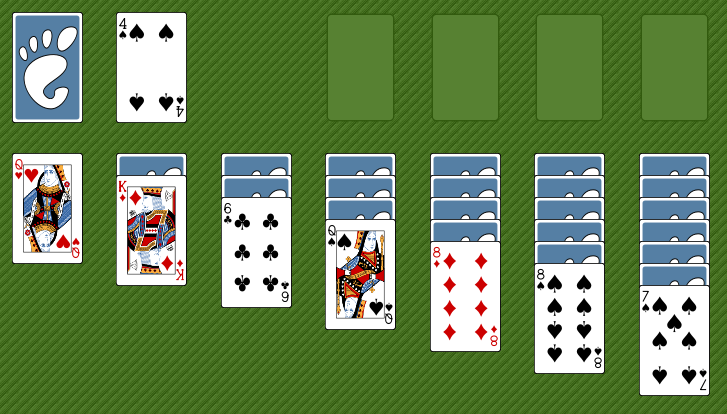The Rise of Klondike Solitaire: How a Simple Game Conquered the World
Introduction: The Timeless Appeal of Klondike Solitaire
Klondike Solitaire is more than just a card game; it’s a cultural phenomenon. For over a century, this classic pastime has captured the attention of millions, becoming the most popular version of solitaire worldwide. From its humble beginnings as a parlor game to its ubiquitous presence on computer screens, Klondike Solitaire has evolved in fascinating ways. In this article, we’ll explore the origins and evolution of Klondike Solitaire, shedding light on how it became the solitaire variant that people can’t stop playing.
The Mysterious Origins of Solitaire
Solitaire, also known as “Patience” in many parts of the world, is a card game played solo. Its roots can be traced back to Europe in the 18th century, although the exact origin remains unclear. Some believe that solitaire was inspired by fortune-telling rituals, where cards were laid out to predict the future, while others suggest it was invented by bored aristocrats looking for a way to pass the time.
Despite its unclear beginnings, solitaire spread rapidly across Europe. By the 19th century, it had become especially popular in France, where the first written rules of the game appeared in books. The basic concept of solitaire remained consistent: the player arranges cards in a specific order based on suits and ranks. However, it wasn’t until later that Klondike, the most iconic version of the game, emerged.
The Birth of Klondike Solitaire
Klondike Solitaire owes its name to the Klondike Gold Rush of the late 1890s, which took place in the Yukon Territory of Canada. Miners seeking their fortune often passed the time by playing card games, and it’s believed that a particular solitaire variant became popular during this period. Klondike Solitaire likely earned its name in honor of the gold rush, symbolizing the challenge and reward of striking it rich, albeit in a simpler, more metaphorical sense.
While there is no definitive proof that Klondike Solitaire originated in the Yukon, the association with the gold rush stuck. By the early 20th century, this version of solitaire had become well-known across North America. Its rules were straightforward, requiring a standard 52-card deck and no additional equipment. These features contributed to its widespread appeal.
The Digital Revolution: Klondike Solitaire on Computers
The true explosion in Klondike Solitaire’s popularity occurred in the digital age. In 1990, Microsoft included Klondike Solitaire as part of the Windows 3.0 operating system. This simple game, pre-installed on millions of computers, was initially intended to help users get accustomed to using a mouse. Its inclusion turned out to be a masterstroke, as users everywhere found themselves irresistibly drawn to the game.
Klondike Solitaire became a staple for computer users looking for a quick distraction. It was free, easy to play, and instantly accessible. By the mid-1990s, Klondike Solitaire had taken on a new life as a digital pastime, one that could be enjoyed during lunch breaks, commutes, or quiet moments at home. It offered a sense of achievement and relaxation, allowing players to unwind while focusing on the puzzle at hand.
Why Klondike Solitaire Stands Above the Rest
Many variants of solitaire exist, but Klondike Solitaire remains the most played. There are several reasons for its enduring popularity:
- Simplicity: The rules of Klondike Solitaire are easy to understand. Players need to move cards into a sequence from King to Ace, with alternating colors. This simplicity makes it accessible to both beginners and seasoned card players.
- Challenge: While the rules are straightforward, winning at Klondike Solitaire is not guaranteed. The game often involves a delicate balance between strategy and luck. This balance keeps players engaged, always striving to improve their technique or beat their previous high scores.
- Solitude and Focus: Klondike Solitaire, like all solitaire games, is meant to be played alone. In a world full of distractions, this game offers an escape, allowing players to focus on a single goal. The solitary nature of the game makes it ideal for moments of reflection or stress relief.
- Portability: Whether in its physical card form or digital version, Klondike Solitaire is incredibly portable. It can be played with a simple deck of cards or on nearly any digital device, from computers to smartphones. This ease of access ensures that players can engage with the game wherever they are.
The Future of Klondike Solitaire
Even as new gaming technologies and trends emerge, Klondike Solitaire remains a beloved classic. Its transition to mobile platforms has only increased its reach, allowing users to play anytime, anywhere. Game developers have also introduced variations and challenges to the standard game, such as time limits and scoring systems, which add fresh layers of excitement for veteran players.
With its combination of history, simplicity, and widespread availability, Klondike Solitaire is likely to remain the most popular solitaire variant for years to come. As long as people seek a quiet, engaging pastime, the allure of arranging cards in perfect order will continue to captivate.
Conclusion: A Lasting Legacy
Klondike Solitaire has come a long way since the days of the Klondike Gold Rush. Its rise from a humble card game to a digital icon speaks to its universal appeal. Whether you’re a seasoned player or someone who occasionally clicks the icon on your computer screen, Klondike Solitaire offers a simple, yet satisfying experience. It stands as a testament to how a seemingly straightforward game can transcend time and technology, becoming an enduring part of our daily lives.








